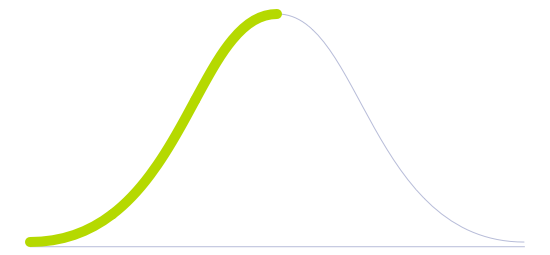Cloud-Connected Supply Chain

Technology Life Cycle
Sales growth slows as the market becomes saturated. The technology is well-established and competition peaks, leading to price drops and marginal improvements.

Technology Readiness Level (TRL)
Technology is developed and qualified. It is readily available for implementation but the market is not entirely familiar with the technology.

Technology Diffusion
Adopts technologies once they are proven by Early Adopters. They prefer technologies that are well established and reliable.

A cloud-based system connects the supply chain and delivers end-to-end supply chain visibility and streamlined business operations, taking over responsibility for many logistical and transaction-based tasks. It manages internal and external assets and processes — such as container inventory, documents, data tracking and storage, and yard capacity — using an immutable, secure, and transparent shared network. For instance, a machine could schedule a maintenance check when it detects a certain probability of (ab)normal wear and tear. The tracked information could include any relevant data regarding logistics matters or even the temperature or composition of goods. Furthermore, each participant could view the progress of goods through the supply chain, quickly discovering the location of products in transit.
By connecting the asset itself to the blockchain through the Internet of Things, it could provide any given machine or product the ability to automatically feed the network with status updates while comparing it with collected data on consumption habits. From voice assistants to energy meters and self-driving cars, it would store tracked data from any transaction between people and companies, making the data trackable and immutable. However, sensitive and personal information is eternally stored using cloud-based services, which creates a precedent for user (non-)ownership, thus restricting the popularity and full adoption.
To ensure safety while carrying out transactions, the European Union's General Data Protection Regulation (GDPR) requires companies to delete client data once it has served its purpose. This recently implemented law clashes with blockchain consistency, in which the data cannot be changed or removed once stored. To solve this paradox, protocols that operate on top of the blockchain are being created, giving people back total control over their data, while maintaining blockchain consistency. This mutable blockchain allows users to delete their data from the chain while storing it privately. The nodes on the blockchain keep their hash number and thus continue to be viable for future use, to resolve disputes (as long as the user continues to maintain their data connected to the node hash number).
Future Perspectives
With improved control, this technological solution could enhance food and drink authenticity and traceability. With advancements in big data and the Internet-of-Things, it could represent an opportunity to develop blockchain solutions for agri-food systems.
Additionally, trade is typically detrimental to sustainability, increasingly taking more than it gives from natural resources. The impact is most prominent in port terminals, more than any other business environment. Ports need to deal with water and air pollution, solid-waste management, contamination issues, and maintain active fuel spillage contingency plans. By strengthening the connection between real and virtual assets, improving audits, and enforcing sustainability goals, this cloud-based logistics system could prove to be quite useful in situations that require precise and connected services.
Image generated by Envisioning using Midjourney